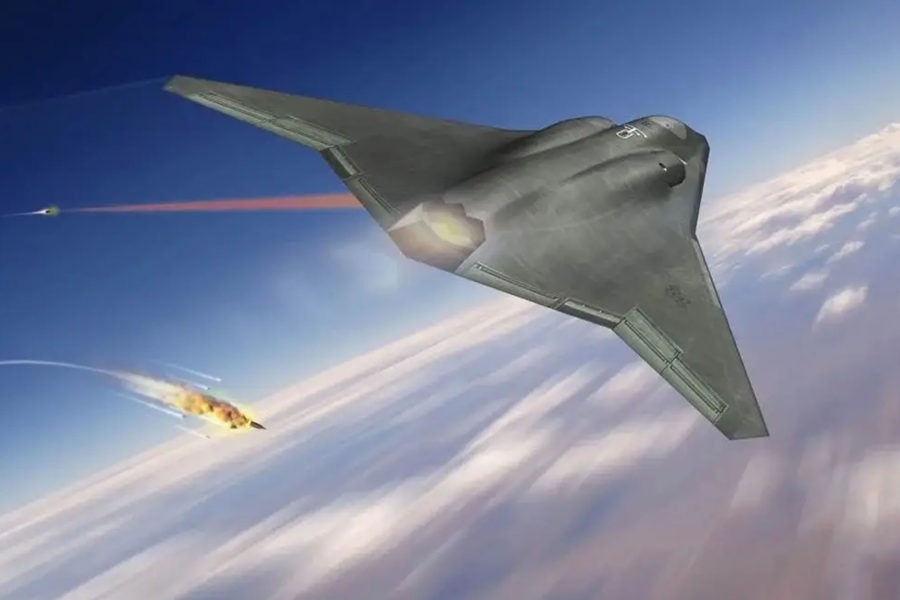The Air Force kicked off the process for selecting the contractor for its Next Generation Air Dominance fighter on May 18, releasing a classified solicitation to industry for Engineering and Manufacturing Development.
In a release, the service said it hopes to award a contract by 2024.
The NGAD is the Air Force’s ultra-stealthy and highly classified successor to the F-22 Raptor, which the service has said it must retire by around 2030 because its capabilities will be overcome by systems fielded by China and potentially other global competitors.
Details of the solicitation are classified for the secretive NGAD program. But the Air Force noted in its release that the solicitation defines expected requirements for the aircraft, which is intended as the world’s first sixth-generation fighter and the centerpiece of a planned “family of systems” that are one of Secretary Frank Kendall’s seven operational imperatives.
A service spokeswoman said the Air Force is “soliciting for an integrated weapon system,” and could not elaborate on the EMD statement as the program is “now in source selection.”
Typically, for a program of NGAD’s magnitude, there is a 60-90 day period in which offerors can ask questions about a draft request for proposals, followed by a similar period in which to respond to a final RFP, and then several months for source selection to be made, so late 2024 is a likely award timeframe. However, the NGAD may not follow a typical acquisition pattern.
“The NGAD platform is a vital element of the Air Dominance Family of Systems which represents a generational leap in technology over the F-22, which it will replace,” Air Force Secretary Frank Kendall said in a statement. “NGAD will include attributes such as enhanced lethality and the abilities to survive, persist, interoperate, and adapt in the air domain, all within highly-contested operational environments. No one does this better than the U.S. Air Force, but we will lose that edge if we don’t move forward now.”
The Air Force release noted NGAD will perform counter-air missions and be able to strike ground targets, confirming 2021 comments by Chief of Staff Gen. Charles Q. Brown, that the platform would also have “some” ground attack capabilities to provide theater commanders with options. The release also seemingly suggested the aircraft will have a Suppression/Destruction of Enemy Air Defenses (SEAD/DEAD) mission as well.
From an acquisition standpoint, the NGAD program strategy seeks to stimulate and broaden the defense industrial base, the Air Force said, requiring an open architecture to encourage future competition for upgrades and “drastically [reducing] maintenance and sustainment costs.”
Past programs have incentivized contractors to lower up-front costs while seeking to make up for narrow margins there with long-term sustainment revenue. Maintenance costs have been a major concern with the F-35, for example.
The likely competitors include are not hard to guess. Last August, the Air Force awarded contracts to airplane builders Boeing, Lockheed Martin, and Northrop Grumman—in addition to engine-makers Pratt & Whitney and GE Aerospace—for the prototyping phase of its Next Generation Adaptive Propulsion engine program, which will power the future NGAD. Experts speculated then that their inclusion pointed to the importance of integrating engine and airframe designs.
In June 2022, Kendall said NGAD had entered the engineering and manufacturing development phase, though he later clarified the program remained a competition.
The Air Force typically does not enter into an EMD phase until it has conducted a competitive prototyping phase. Former Air Force acquisition executive Will Roper revealed in September 2020 that at least one NGAD prototype had already flown and “set records,” though he did not say what they may have been. Other Air Force and industry officials have said privately that NGAD has progressed past the Preliminary Design Review phase with at least two companies.
The service could not immediately say if the solicitation is open to only those companies who may have competed in the prototyping phase—and how many might be in that group—or whether the solicitation is truly open to any comers.
Competition for the program is likely to be fierce—Kendall has said the aircraft will cost “multiple hundreds of millions of dollars” per tail, several times the $80 million-per-copy cost of the Air Force’s F-35A. The exact size of the planned fleet is unknown, but Kendall has suggested a notional figure of 200 airframes. Senior Air Force leaders have also hinted that NGAD may come in at least two variants—one shorter-range model intended for the European theater, and one optimized for the longer distances required to operate in the Pacific theater.
At one point, led by Roper, the Air Force planned building 50-100 examples of an NGAD and moving immediately to a next iteration or completely new aircraft, retaining each iteration only 8-12 years, then retiring it, the better to keep at the cutting edge of technology. But Kendall has seemingly poured cold water on that notion, saying the system is too complex for that quick a rhythm.
The Air Force’s 2024 budget proposal seeks $1.933 billion for research, development, test, and evaluation for NGAD, a figure that will only grow in the years ahead. USAF projects investments of $16.23 billion on RDT&E for NGAD over the next five years. That includes funding to develop uncrewed Collaborative Combat Aircraft that will will fly alongside the manned NGAD fighter.
The solicitation issued this month is independent of any CCA development, the Air Force said in its May 18 release.
